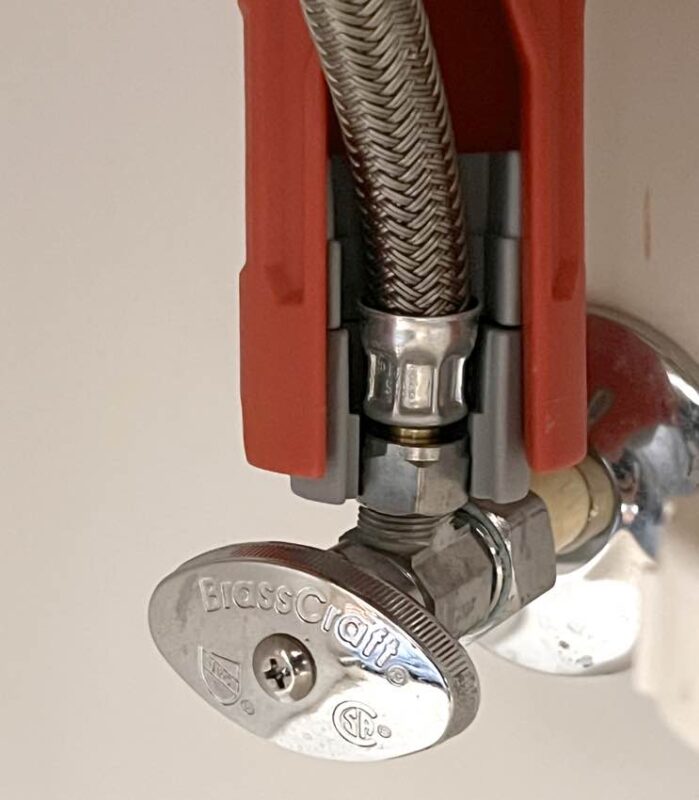We know the scenario all too well. You find a really great deal on a new kitchen faucet to replace that old leaking clunker you have. As soon as you get home you excitedly start to tear out the old one and realize that you have no way to loosen the large nuts on the bottom of the faucet. Neither your adjustable wrench nor any other wrench for that matter seems to fit the space. Fear not. We’ll show you how to remove and tighten under-sink kitchen faucet nuts.
Step 1: Clear Out the Space Under the Sink
First things first—clear out the area underneath the sink. You need to be able to see up into the area where the sink faucet nuts. You really can’t do that unless you can get under there and work. Remove the towels, cleaners, etc. Consider also getting a nice towel to lay down for your head and shoulders so you can look up at the sink.
Step 2: Get Some Lighting
In addition to some safety eyewear, grab a headlamp or other light so you can see what you’re doing. You can have the best tool in the world, but if you can’t see—you can’t use it! We like something similar to the line of Milwaukee LED headlamps but, really, anything will do.
Step 3: You Need the Right Tool to Remove and Tighten Under Sink Kitchen Faucet Nuts
You need a tool called a basin wrench or faucet swap-out wrench. These special plumbing tools let you get into those tight spaces to remove plastic and metal nuts in cramped quarters. They either have a long handle with a tee on one end or a long plastic tube with various inserts. In either case, they give you the required leverage to remove faucet nuts.
The T-handle tools feature a spring-loaded adjustable wrench head that grips onto the nut. Straight wrenches typically feature inserts that let you grip the nut with something akin to an open-ended socket. Both include long handles to let you reach up behind the sink basin and get at those hard-to-reach nuts. You can purchase a simple basin wrench for around $20-30 dollars at most hardware stores or online.
It may be the best investment you can make if you need to tackle a job like this.

Our new favorite tool for this work is the Milwaukee Faucet Swap-Out Wrench. You can pay more money and get fancier solutions. However, for that once-in-a-great-while job, a less expensive wrench should serve you well. We used it recently when installing a Pfister Pfirst faucet in a bathroom and it really sped up the process.
Step 4: Use Your Wrist!
Once you have the tool in place, a simple rotation of your wrist should provide enough force to loosen most nuts. The two types of nuts you encounter are the retaining nuts for water supply lines and the plastic nuts that hold the faucet in place. Any Basin wrench should work well on either or both.
For tightening or loosening supply lines at the faucet end, be sure to use an adjustable wrench on the faucet to keep it from twisting while you tighten the nut.

If you notice, some basin wrenches wrap around the supply lines while others provide that T-handle approach. You can decide which tool type works best for you.




